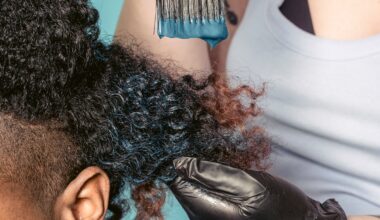Introduction
Hair oil, a cherished asset in our hair care regime, is often lauded for its natural origins and potent benefits. However, just like any other beauty product, hair oils too have a ticking clock on their efficacy. Understanding the shelf life of hair oils is pivotal, not just to reap the maximum benefits but also to avoid any adverse effects on our scalp and hair. Unlike synthetic products, the organic nature of hair oils might give an illusion of timeless usability, but in reality, they too bow down to the laws of nature.
Understanding Shelf Life: Beyond the Label
Definition of Shelf Life
Shelf life is the length of time for which an item remains usable, consumable, or saleable without becoming unfit for use or unsafe. In the realm of hair oils, it denotes the period during which the oil retains its intended properties and benefits.
How Manufacturers Determine Expiration Dates
The expiration date on your bottle of hair oil isn’t arbitrary. It’s determined through stability testing where the product is subjected to various conditions to observe how its quality is maintained over time. This includes assessing the oil’s properties under different temperatures, light exposures, and other environmental conditions.
The Difference Between ‘Best Before’ and ‘Expiry Date’
- Best Before: This date indicates when the product will remain at its best quality. Post this date, the hair oil may still be safe to use, but may not offer the optimal benefits.
- Expiry Date: An expiry date is a strict boundary, post which the product should not be used as it may have deteriorated or become unsafe.
What Dictates Hair Oil’s Longevity?
Type of Oil
Every oil has its unique composition, which greatly influences its shelf life. For instance:
- Coconut Oil: Due to its saturated fat content, it can last for about 2 years if stored correctly.
- Jojoba Oil: It’s technically a wax ester and mimics the skin’s natural oils, giving it a longer shelf life of around 1-2 years.
- Flaxseed Oil: This oil, rich in omega-3s, has a short shelf life and should be consumed within a few months.
Processing & Purity
- Unrefined vs. Refined: Unrefined oils, though more natural, have a shorter shelf life due to the presence of impurities. Refined oils, having undergone processing, might last longer but can lack some beneficial nutrients.
- Cold-Pressed Oils: These oils are extracted without heat, preserving their nutrient profile. They might have a slightly shorter shelf life compared to heat-extracted ones due to their purity.
Additives and Preservatives
- Natural Preservatives: Some oils come with natural antioxidants, like vitamin E, which can extend their shelf life.
- Added Preservatives: Certain hair oils might contain added preservatives to ensure a longer shelf life. However, these can sometimes counteract the natural benefits of the oil.
Packaging
- Light and Air: Exposure to light and air can degrade the quality of oils. Amber or dark-colored bottles are preferred as they protect against light. Air-tight containers prevent oxidation, preserving the oil’s quality.
- Material: Glass bottles are generally preferred over plastic, as they maintain the oil’s purity and prevent potential chemical leaks from the plastic.
Clear Signs Your Hair Oil Has Expired
Changes in Smell
One of the most prominent indicators is the alteration in the aroma of the oil. Fresh oils have a characteristic scent pertaining to their type. As they go rancid, they start emitting a sour or unpleasant odor. For instance, the usually sweet-smelling almond oil might start to smell like old, used cooking oil.
Alterations in Color and Texture
Just as with the fragrance, the visual and tactile aspects of hair oil can also shift as it ages:
- Color: Oils might darken or become cloudy as they approach their expiration. A previously golden argan oil might appear murkier than when fresh.
- Texture: An oil that was once smooth might turn grainy or sticky. This change can be especially noticeable when the oil is applied to the hair or skin.
Separation of Components
Natural hair oils, especially those mixed with essential oils or other ingredients, may begin to separate over time. This isn’t always a sign of expiration, but if the oil doesn’t blend back together upon shaking, it might be time to toss it.
Effectiveness
Expired hair oil might not provide the nourishment or shine it once did. If you observe that your regular hair oil treatment no longer offers the same results or leaves your hair feeling greasy rather than moisturized, it could be a sign that the oil’s active components have deteriorated.
Each of these indicators is nature’s subtle nudge to remind us that everything, even our treasured hair oils, has a time limit. Being aware can save us from potential hair woes.
Guarding Against Premature Expiration
Proper Storage
- Location Matters: Always store your hair oils in a cool, dark place. Avoiding direct sunlight can greatly prolong the life of the oil.
- Temperature Control: Extreme temperatures, both hot and cold, can degrade the oil. A consistent, cool room temperature is ideal. Some oils, like flaxseed, benefit from refrigeration.
Usage Habits
- Always Use Clean Hands: When dipping into a bottle or jar of hair oil, ensure your hands are clean. Introducing bacteria can speed up the oil’s deterioration.
- Avoid Water Contamination: If you’re using oil in a damp environment, such as after a shower, be careful not to let water droplets enter the container. Water introduces microbes which can spoil the oil.
Invest in Quality Packaging
- Sealed and Dark: As previously mentioned, amber or dark-colored bottles are ideal. Making sure the bottle is tightly sealed prevents air from accelerating the oxidation process.
- Avoid Plastic: As far as possible, avoid storing oils in plastic containers. Over time, certain plastics can leach chemicals into the oil.
Regular Checks
- Visual Inspection: Every once in a while, inspect your hair oils for changes in color or texture.
- Aroma Test: Give your oil a sniff. Familiarizing yourself with the fresh scent will help you detect when it starts to turn.
Adopting these practices can not only ensure that you’re using the oil at its peak efficacy but also offer a safety cushion against potential irritations or scalp issues that can arise from using spoiled products
Conclusion
Hair oils, with their organic essence, can often lull us into believing they’re everlasting. But just as everything in nature, they too have an expiration. Recognizing the importance of shelf life isn’t just about maximizing the benefits, but also ensuring the safety and health of our scalp and hair.
From understanding the subtle differences between ‘best before’ and ‘expiry dates’, to observing the texture and aroma for signs of rancidity, being proactive in our approach can save us from inadvertent hair mishaps. And with a few precautionary steps like proper storage and mindful usage, we can significantly prolong the vitality of our cherished hair elixirs.
In the vast world of hair care, knowledge is indeed power. By decoding the shelf life of hair oils, we arm ourselves with the wisdom to make informed choices, ensuring our tresses always get the best care they deserve.





